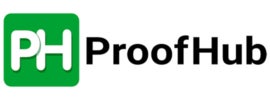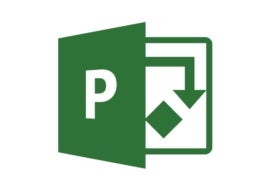
Looking for an alternative to Trello? Our comprehensive list covers the best trello alternatives, their key features, pricing, pros, cons and more.
Trello is a pioneer of project management solutions that uses a kanban-style user interface. Since its launch in 2011, Trello has continued to evolve and revamp its card system layout by adding new features like timelines, dashboards and tables.
In the same time frame, several other project management solutions have emerged as alternatives to Trello. If Trello is not an ideal fit for your company, you should consider using one of these alternative software options. We have highlighted the 10 top Trello alternatives on this page for your consideration.
Jump to:
Here is a quick view of how the top Trello alternatives compare in terms of core features:
| Kanban boards | Gantt charts | Workflow automation | Native time tracking | Built-in messaging | Starting price | |
|---|---|---|---|---|---|---|
| Trello | Yes | Yes | Yes | No | No | $5 per person per month |
| ClickUp | Yes | Yes | Yes | Yes | Yes | $5 per person per month |
| Asana | Yes | Yes | Yes | Yes | Yes | $10.99 per person per month |
| Hive | Yes | Yes | Yes | Yes | Yes | $12 per person per month |
| Wrike | Yes | Yes | Yes | Yes | Yes | $9.80 per person per month |
| Taskade | Yes | No | Yes | No | Yes | $4 per person per month |
| Airtable | Yes | Yes | Yes | No | No | $10 per person per month |
| ProofHub | Yes | Yes | Yes | Yes | Yes | $45 flat rate per month |
| Jira | Yes | Yes | Yes | No | Yes | $7.75 per person per month |
| Microsoft Project | Yes | Yes | Yes | Yes | No | $10 per person per month |
| Monday | Yes | Yes | Yes | Yes | Yes | $8 per person per month |
ClickUp is a powerful project management tool that most closely resembles the Asana project management tool format. ClickUp’s dashboards are slightly more graph-like than Asana’s but less so than Trello’s.
In terms of features, ClickUp offers more functionality than Trello. For instance, ClickUp can do kanban boards just as easily as Trello, but with added features like embedded email and the ability to easily customize the dashboard or switch between views.
Kanban boards, workflow automation and timeline views are available in both software. ClickUp offers Gantt charts and native messaging, which are not available in Trello without a Power-Up.
For more information, read the full ClickUp review.

As a Trello alternative, Asana might just be one of the closest comparisons but with more flexibility — so much so that Asana has a built-in tool to import your Trello boards with one click. Asana breaks away from the strict board views of Trello and instead focuses on projects. Projects can be displayed in multiple views, including kanban.
Asana focuses more on collaboration than Trello by offering tools to facilitate communication and sharing between teams and departments. This can be helpful for creative teams and any other teams that need to share information quickly and repeatedly during projects.
Both Asana and Trello have some similar features, as both software offer kanban boards, timeline views and workflow automation. Trello does not natively offer Gantt charts or messaging features without a Power-Up.
For more information, read the full Asana review.

Hive is a great alternative for larger teams that have outgrown Trello. In particular, Hive’s analytics tools allow project managers to quickly visualize project and performance data to identify any issues that need attention. In addition, Hive offers stronger communications features than Trello’s @mention system. Hive includes real-time notifications and a built-in instant messaging system.
For more information, read the full Hive review.

Wrike is a great alternative for users who want to take a big leap in features, even beyond what Asana and many other project management tools offer over Trello. Wrike’s feature set includes many built-in integrations, making most third-party tools unnecessary; its suite of features goes beyond comparable tools like Asana or ClickUp. Wrike also offers users standard project management views, including kanban and timeline.
For more information, read the full Wrike review.

Taskade is an easy-to-use project management solution known for its excellent team collaboration and list-based task management capabilities. While Trello is also simple to use, Taskade offers a more minimalist interface. However, if you like using kanban boards, you will enjoy using Trello more than Taskade. Trello is also better at visualizing tasks or project progress.
For more information, read the full Taskade review.

Airtable is a unique project management tool that’s based on a spreadsheet and database model. Think of it as Excel or Google Sheets supercharged specifically for project management. Airtable is perfect for teams with data-intensive workflows. By incorporating the tools of a spreadsheet and database, Airtable helps organize projects that involve large data sets or asset management.
This Trello alternative is also a great fit for teams that prefer to use spreadsheets as their main way of visualizing and entering data. However, users are not locked into a spreadsheet view with Airtable; they can quickly swap between kanban, calendar and other popular views.
Both software offer kanban boards, workflow automation and timeline views. Airtable offers a few extra features compared to Trello. This includes Gantt charts and native messaging capabilities.
For more information, read the full Airtable review.

ProofHub builds on some of the core features of Trello without adding undue complexity; this includes ProofHub’s powerful proofing and project management tracking tools that are easily accessible.
Some advanced tools offered by ProofHub include custom reporting and workflows — which are strong communication features — and project-tracking tools that work particularly well for project managers. ProofHub is a great alternative to Trello for teams that need more advanced features than what Trello offers but still want a highly accessible tool.
For more information, read the full ProofHub review.

While both Jira and Trello are top project management solutions, they have different strengths. Jira is an excellent tool for teams that need issue-tracking tools or extensive support for agile methodology. Trello is better for general-use project management; however, if you need a more powerful solution that offers a high level of customization and advanced tools, then Jira would be the better solution.
For more information, read the full Jira review.

Microsoft Project and Trello are both capable project management solutions, but they cater to different needs. MS Project is a powerful and comprehensive solution that offers a full range of features; however, it has a steep learning curve. MS Project is ideally suited for large-scale projects or for teams that are already using Microsoft products.
Microsoft Project can be used as a standalone product or added to your Office 365 subscription.
For more information, read the full Microsoft Project review.

Monday work management offers a more comprehensive project management platform compared to Trello. While Trello is simpler to use, it is not ideal for complex projects. Monday work management offers the advanced tools required to manage a project portfolio or complex projects. You also get more customization options with monday work management.
For more information, read the full monday work management review.
Trello is worth it if you value simplicity and ease of use. It’s also great for individuals or teams looking for a generous free plan with unlimited users and plenty of features. The project management tool doesn’t quite have the scalability offered by other competitors, so you might outgrow the software. Trello is ideally suited for small businesses, freelancers and solopreneurs looking for a simple project management solution for collaboration, project tracking and task management.
While Trello has established itself as one of the best project management solutions for basic project management, it has some drawbacks. Here are Trello’s top pros and cons.
| Pros | Cons |
|---|---|
| Ease of use. | Reliant on kanban boards. |
| Generous free plan. | Not designed to handle complex projects. |
| Highly visual interface. | Missing advanced project management tools. |
Trello offers a free version that allows unlimited items across 10 boards in a single workspace, and unlimited file storage with a maximum of 10MB per file.
Increasing to the $5 per user per month plan (billed annually) adds advanced checklist options, custom fields, unlimited storage with 250MB per file, 1,000 workspace command runs per month, single board guests and saved searches.
Increasing to the $10 per user per month plan (billed annually) adds a dashboard view, timeline view, table view, calendar view, map view, unlimited workspace command runs per month, admin and security features, priority support, Google apps sign-on and simple data export.
Finally, Trello also offers an enterprise offering for $17.50 per user per month (billed annually) that adds unlimited workspaces, organization-level permissions, multi-board guests and free single sign-on and user account provisioning support.
Trello’s main strength is its simplicity and easy learning curve; teams and individuals can quickly add new boards and cards without menu-diving or other navigation hassles. However, some users and teams may outgrow Trello and need features that can handle more complex projects and workflows. If you need features such as native time tracking and Gantt charts, you may need to consider using a Trello alternative.
To compile this list of top Trello alternatives, we analyzed what Trello is lacking and how this gap can be met with other applications. Our analysis included an evaluation of several aspects of the software, including its usability, scalability, standout features, strengths and weaknesses. Customer ratings and testimonials were also considered in our analysis of each software.
Wrike is the ultimate solution for managing projects.
Discover the power of Wrike’s award-winning project management software. Maximize productivity using Gantt charts, Kanban boards, and calendars. Streamline resource allocation, drive team alignment, and enhance forecasting. Benefit from AI-driven automation to save time on admin. Deliver impressive results, hit deadlines, and stay within budgets while elevating your team’s performance.
monday.com Work OS is the project management software that helps you and your team plan, execute, and track projects and workflows in one collaborative space. Manage everything from simple to complex projects more efficiently with the help of visual boards, 200+ ready-made templates, clever no-code automations, and easy integrations. In addition, custom dashboards simplify reporting, so you can evaluate your progress and make data-driven decisions.
WorkOtter is the #1 ranked SaaS project, resource, and portfolio management solution. WorkOtter is disrupting PPM with features, world class support, and visual dashboards that make your PMOs look brilliant.
Resource Guru is the fast, flexible way to schedule teams and keep projects on track. Get full visibility of who’s available and who’s overworked, so people and projects succeed in harmony. Assign work, balance workloads, and edit schedules in seconds. Keep your team up-to-date with personal dashboards and daily schedule emails. Analyze utilization rates, clients, and projects for more accurate forecasts and budgets. Trusted by companies including NASA and L’Oreal. Try it free for 30 days!